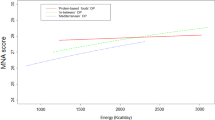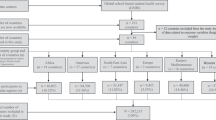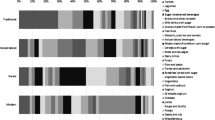Abstract
The overall situation as regards dietary intake and nutritional status in the countries of Central and Eastern Europe has varied considerably during previous decades; however, after the political, social and economic changes during the nineties these differences have increased further, especially in the areas with low GDP and war, and in the regions affected by radionuclides etc. No systematic surveillance systems in representative samples of adolescents were in effect at the beginning of the nineties in Central and Eastern Europe. There exists relatively more data on nutritional status characterized by body mass index (BMI) and skinfold thickness measurements. Food intake has mainly been followed in smaller samples of adolescents, and or in special groups (athletes, obese, vegetarians, allergies, Romanies, pupils of special schools etc.). In the countries and/or areas with sufficient GDP and income the food intake has most often been too abundant when considering the real needs of the growing organism, especially from the point of view of energy output. The composition of the diet is not adequate, i.e. too much protein, fats, sugar etc. This situation is similar to that in Western countries, USA etc. On the other hand, adolescents in Central and Eastern Europe consume too few vegetables, fruit and milk products in their diet (i.e. low intakes of Ca, fibre and vitamin C), which is less apparent in Western countries. This is mainly due to bad eating habits and nutritional traditions in the families, but also due to the changes of the prices of the mentioned foodstuffs after political and economic changes in this part of the world. Certain nutritional deficiencies were also shown as factors increasing the health risks from the Chernobyl disaster, mainly in the Ukraine, Belorussia and certain parts of Poland.
European Journal of Clinical Nutrition (2000) 54, Suppl 1, S336–S40
This is a preview of subscription content, access via your institution
Access options
Subscribe to this journal
Receive 12 print issues and online access
$259.00 per year
only $21.58 per issue
Buy this article
- Purchase on Springer Link
- Instant access to full article PDF
Prices may be subject to local taxes which are calculated during checkout
Similar content being viewed by others
Author information
Authors and Affiliations
Corresponding author
Rights and permissions
About this article
Cite this article
Pařízková, J. Dietary habits and nutritional status in adolescents in Central and Eastern Europe. Eur J Clin Nutr 54 (Suppl 1), S36–S40 (2000). https://doi.org/10.1038/sj.ejcn.1600982
Published:
Issue Date:
DOI: https://doi.org/10.1038/sj.ejcn.1600982
Keywords
This article is cited by
-
Protein intakes and their nutritional sources during the first 2 years of life: secondary data evaluation from the European Childhood Obesity Project
European Journal of Clinical Nutrition (2016)
-
Dietary animal and plant protein intakes and their associations with obesity and cardio-metabolic indicators in European adolescents: the HELENA cross-sectional study
Nutrition Journal (2015)
-
An exploratory survey of eating behaviour patterns in adolescent students
Eating and Weight Disorders - Studies on Anorexia, Bulimia and Obesity (2010)
-
Contribution of highly industrially processed foods to the nutrient intakes and patterns of middle-aged populations in the European Prospective Investigation into Cancer and Nutrition study
European Journal of Clinical Nutrition (2009)
-
Development and evaluation of a self-administered computerized 24-h dietary recall method for adolescents in Europe
International Journal of Obesity (2008)



